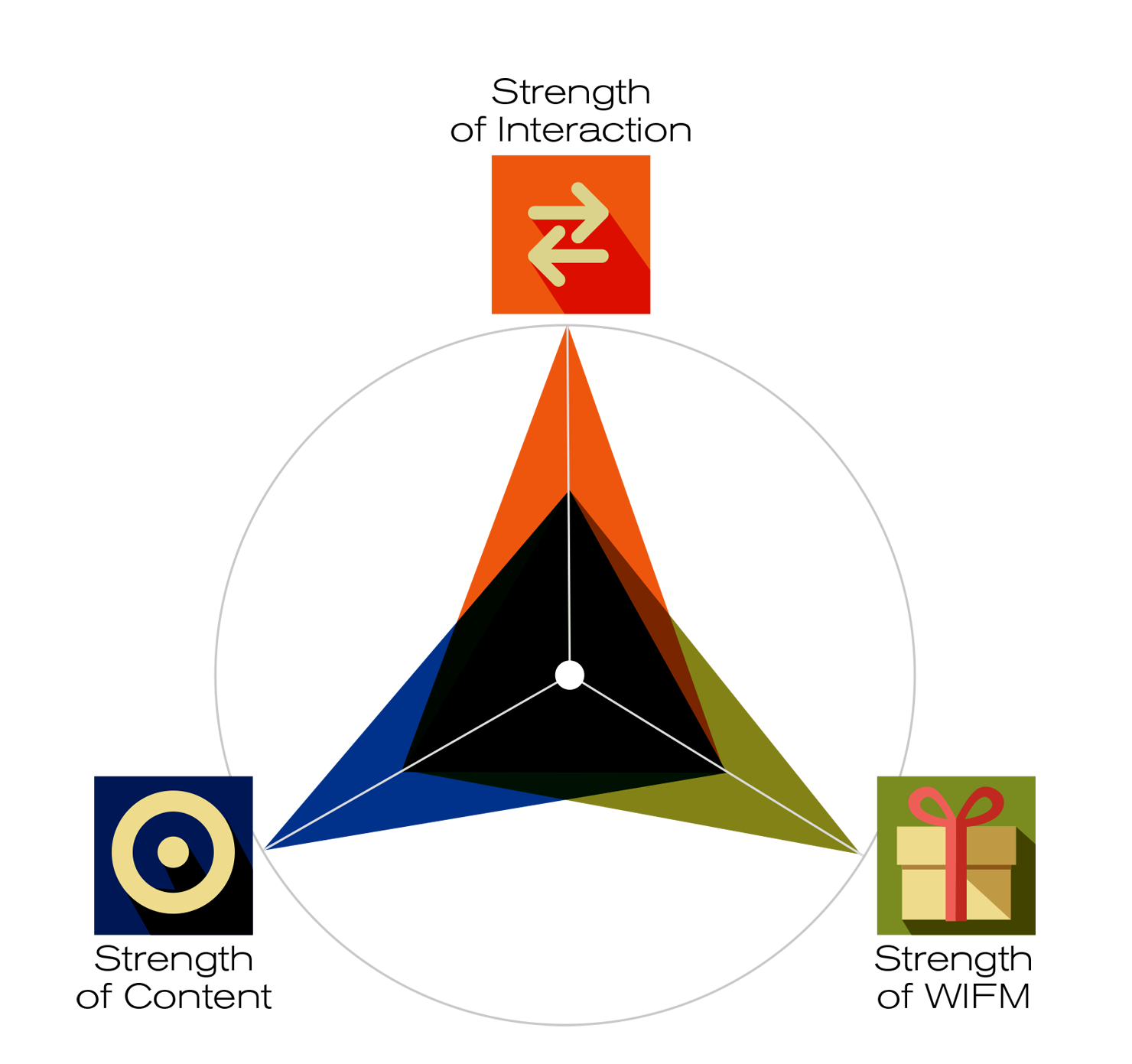The formula for true customer engagement
Apr 06, 2021
Written by: Mark Pearson, VP Loyalty Marketing BI WORLDWIDE
(View Author Bio)
As you work toward maximizing customer engagement, remember the critical role content plays in getting attention and prompting action. Use these best practices to ensure you're creating concise, compelling, relevant content to optimize your efforts.
Scroll Down
__________
The most successful customer engagement and loyalty programs focus on driving desired behaviors across the customer lifecycle to deliver results.
__________
And when it comes to driving desired behaviors, the Fogg Behavioral Model is a great tool to leverage. According to the model: “a behavior happens when the three elements of MAP – motivation, ability and prompt – come together at the same moment. Motivation is your desire to do the behavior. Ability is your capacity to do the behavior. And prompt is your cue to do the behavior.”* Early on in designing a customer loyalty program, once you have identified the desired behaviors you want to drive, it’s important to look for gaps in any of the three MAP elements.
To close these gaps, we’ve developed an approach called the Formula for True Engagement, which leverages a combination of content, interactivity and WIFM (What’s In It For Me). Start with content, then look for ways to make the content as interactive as possible. Finally, add a WIFM component like incentives, probabilistic and deterministic rewards and gamification.
When it comes to motivation, content provides the “why,” ensuring customers understand the benefits of the desired behaviors. When it comes to ability, content provides the “how,” ensuring that customers have the knowledge and resources to complete the behavior. When it comes to prompt, content captures customer attention and drives the necessary steps to completing the behavior.

Since content is so critical, consider these three best practices for optimization:
1. Be concise
Thanks to changing consumption patterns and information overload or infobesity, consumers have a very low attention span. In fact, according to a recent study, when it comes to mobile ads, you have less than one half of a second to capture consumer attention.** With this in mind, we need to treat attention like currency and earn the right to engage. The key here is to design content so that it attracts focused attention first. Focused attention is the brain’s ability to concentrate on a targeted stimulus for any period of time. It is imperative, then, that the content be concise. Once focused attention is captured, the goal is to earn sustained attention with progressively more detailed content.

2. Make it compelling
In order to capture focused attention concisely, the content needs to be compelling. Leveraging heuristics, or mental shortcuts, like vividness is a great place to start. The more visual and interactive the content, the better. And, generally, the more emotional the content is, the better. Targeting emotions will spark an immediate connection.
3. Stay relevant
Most importantly, in order to maximize engagement, the content needs to be relevant. Ideally, you want your customer to feel like the content was written specifically for them. Segmentation, targeting and personalization are key here. The goal is to create an idiosyncratic fit with your target audience. This is a real or perceived unique advantage that entices increased program engagement. Customers base their level of engagement on an assessment of the potential reward relative to effort required to complete the desired behaviors – the more relevant the content and rewards are, the more engaged your customer will be.
Most loyalty programs attempt to drive multiple behaviors across the customer lifecycle, often concurrently. One final design concept that increases relevance is focusing on the “next best action” for each individual customer, to the extent possible. This makes engagement frictionless for the customer and drives optimal lifecycle progression and results for the program.
__________
As you work towards maximizing customer engagement, remember the critical role content plays in getting attention and prompting action. Use the best practices above to ensure you’re creating concise, compelling, relevant content to optimize your efforts.
__________
Sources:
*From "Tiny Habits: The Small Changes That Change Everything" by B.J. Fogg
**From a study conducted by Neurons Inc. for The Mobile Marketing Association that found consumers took just 400 milliseconds to see and react emotionally to 67% of mobile ads
The best way to get started is to get in touch.


















